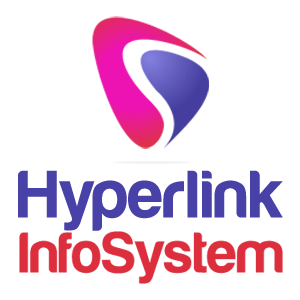
Food, beauty, shopping, travel, banking there's an app for everything. Apps make life so comfortable that it feels like a nightmare to imagine a single day without it. In addition, apps in the field of learning have already been launched.
With a rise in the corporate and commercial sector, the conventional learning attitude is changing. Whether it's schools or businesses, today's youth are technologically knowledgeable and even institutions and organisations use clever technology to deliver instruction. As everybody, from students to employers, loves the ease of mobile applications, we increasingly migrate away from old methods.
According to a new study, 95% of young people in the US have a smartphone or are virtually continuously online. This demonstrates that mobile phones have become necessary and no longer considered a luxury. And there are predicted to be more than 5 billion mobile telephone users in 2020. China is now leading the table with India closely behind most smartphone users.
Looking at the craziness of mobile apps, education on smartphones, computers and tablets is becoming more and more integrated into the learning environment. When the M-learning arrives, learning has been made available to our convenience anywhere and whenever we desire. And students who are self-motivated, well organised and accountable make the most of it. Let us thus explore how M-learning changes THE-future with help from mobile app development company.
Innovative content with personalised touch
With virtual personal assistants such as Amazon's Echo, Google Now, Siri, Cortana, BlackBerry Assistant, and many more, the learning process has become more individualised to reduce staff workloads. Today, we can only recognise different items, plants, animals and even the stars by using our telephone camera. Just imagine how great it would be to take a visit to a historical castle during the history lecture using a Google or Oculus Rift on Facebook.
Apps like Byju and Khan Academy from e-learning app development company provide offline learning for customised material. Their flexible technique is based on the student's capacity to learn. Now don't hesitate anymore, you only have to switch on your phones and repeat the information till you gain an understanding of it. M-learning is a better way of learning using audio and video for K12 students.
Learners who are responsible
This way of working from an on-demand app development company learning from fosters a sense of responsibility and management amongst the students. Time management is one of the major competences indirectly developed by the user and finally inspired by the learner. It enhances not just the student's talents but also the abilities of the trainer or instructor assigned. Doubts may also be handled from anywhere in the globe at any time, making learning conveniently available 24 hours a day.
You can even remember and check everything by way of M-learning, even if you took a nap in the classroom, and lost a topic or lesson for any reason. It just keeps you learning but it's up to the user in the end when and how you use this gift.
Even before the epidemic there has been a shocking pace in the development of the e-learning business. However, the unexpected stoppage of all companies, including educational institutions, has further hastened this. The e-learning business has been allowed more room to flourish. Data from the global market survey show a rapid rise of $375 billion in the capitalisation of the industry by 2026. The potential might be understandable.
Worldwide, we accept and commend the concept of e-learning. The rapid expansion of the eLearning sector has offered businesses many new options and created something for filling the industry gap. One of these is e-learning software.
Gives a desktop in your phone
In every area, smartphones have almost replaced PCs. Smartphones may be used as a desktop when applications are introduced like Microsoft's Windows 10 Continuum and Samsung's DeX. You may study from information, or play knowledge-based games to upgrade your GK, while you are transiting or rather than surfing on social media. In sum, the present micro and material sharing trend has increased the effectiveness of learning.
Beside school and college students, the rest of the students are quite busy, they can learn new things for a short while. So the only way to rescue it was microlearning. In perspective, microlearning involves giving material in parts to the user so that they obtain information in a pleasant way. These data might take 3-5 minutes of voice, video or text without a great deal of time.
This notion of e-learning software is praised by office staff who have limited time to learn and acquire new job methods. Since the start of 2021, microlearning has become a significant hit and this trend does not seem to halt.
Gamification
Whether you're 5 or 50, it doesn't matter, learning is always more engaging, if it's funny not to mention digestible. This component of eLearning, known as gamification, is about making learning enjoyable!
However, all this is not about fun and games, because the commencement of games after introduction or examination of teachings has shown to be beneficial. First of all, the substance may be applied and interacted immediately. Compliance, retention, grades, and general classroom satisfaction are also the way understanding works.
E-classrooms
This teaching approach blends conventional learning techniques with digital technology and is frequently utilised to convey information through numerous educational institutions. For individuals living in the corners of the planet, this has proved the perfect mode. Cloud-based applications, such as Socrative and Prezi, allow teachers and students to engage successfully with one another, whereas Google Classroom, Quizlet and Class Dojo.
Applications like Duolingo, LinguaLift, and HelloTalk based interaction-friendly apps can assist you to learn a new language even if you walk, switch, or sleep in the morning. M-learning has gone a step farther by wearable gadgets. Now, your cell phone does not even have to carry your portable devices. The areas in which wearable gadgets play an important role in education and learning include instructional videos, campus visits, virtual reality games and increased reality (AR).
Adaptive learning
Adaptive learning is a form of education in which resources, activities, projects and tasks are customised to the particular requirements of each learner. As the area of eLearning, adaptive learning is generally implemented by defined algorithms and evaluations in contrast to teachers' possible arbs.
Too far, adaptive learning has been extensively experimental with organisations and rivals who have worked out kinks and participated in small-scale implementation for the previous several years. As eLearning proceeds, the experiments are completed and broad acceptance starts.
Social learning
Social learning takes and applies to the present technology age of human interaction and group dynamics on its basic components. Online forums, classrooms and file sharing platforms — cooperation has never been more productive, effective and seamless through social learning in the electronic realm. Teammates may now provide insight and assistance from anywhere, whether it's their classroom, home or coffee shop.
More and more collaborative technologies are anticipated to enter the struggle for market supremacy, as social education applications continue to evolve. In addition, social learning as a whole might be possible outside of individual classes and group project settings
Learning management system
Not just the design and implementation of lesson systems are Learning Management systems. More specifically, they help instructors and others in the background to collect actionable information and other analytical elements. Not only does the evaluation of the efficacy of a session or an entire course by everybody involved aid, it also plays an important part in learning.
A management strategy that links individual performance with overarching institutional goals is otherwise known for its shorter approach L&D, Learning and Development. Although this is routinely used in a wide range of businesses and circumstances, we definitely talk about its special function in eLearning.
Virtual reality
In practise, enhanced and virtual reality allows eLearning practitioners to immerse their students fully into the topic whether it includes mathematics, physics, history or literature. Furthermore, the increased and virtual reality also leads eLearning to new levels in other areas. The technology is always evolving and we look forward to seeing this e-learning trend continue for a while. Video learning, gamification and mobile learning never were more immersive in combination with enhanced, virtual reality.
Conclusion
The revolution takes place at a great speed in the educational sector. It is the responsibility of e-learning technology businesses now to create a solution that opens new and effective ways of learning and tackle these difficulties. All of these and emerging technologies will make learning a lot more fun and we can see that M-learning is here to remain long-term.
